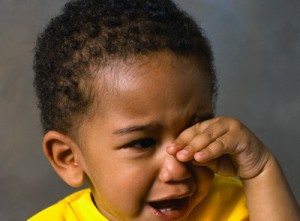What’s So Terrible About Being Two?
So what’s up when a kid reaches the age of two? Many parents are ready to pull their hair out when their kids reach this age, and it continues for about a year to a year and a half.
Parents of younger infants are lulled into a sense of ease when their son or daughter reaches about six months. By this time infants are usually sleeping well through the night, able to sit in a high chair, can amuse themselves in a playpen and are enthralled with mom and dad’s gaze and smile. To many, parenting at this stage appears easy and there is no way of appreciating just what lies ahead.
By 24 months however, toddlers may be bored with the playpen, they are generally quite mobile – able to walk at a brisk pace for multiple steps and highly explorative. Herein lies the set-up for the terrible twos, unless prepared.
Two-year-olds have this marvelously inquisitive mind, but absolutely no experience from prior learning to understand “safe or harmful”, “good or bad”, “right or wrong”. As such, they simply set out to explore the world, as it is available to them. Until they learn or experience otherwise, all objects are neutral. Objects have no inherent worth and are not yet known for causing either pleasure or pain. It is only when the child experiences the object can they determine its value. Value to the two-year-old is usually a function of the pleasure an object can bring to the child. Pleasure is derived from touch, taste, sight, sound, and scent. Some things are pleasurable and “fun”, while others offer neither amusement nor any particular pleasure. Other items, like the taste of a sour lemon, may cause displeasure and children soon learn to avoid these.
Knowing this about normal childhood development, the challenge facing parents is to pre-empt negative outcomes from their child’s exploration and learning while maximizing the opportunity for positive outcomes. To reduce frustration and maximize the opportunity for your child’s learning and pleasure consider the following:
- By this stage of life, if you haven’t already baby-proofed the home, do so. It is reasonable to put away the fancy glass and china that adorns the coffee table, have safety latches on cupboard doors and gates on the stairs. Your child will explore and this is normal and healthy, so get on your knees, look at your home from your child’s point of view and fix anything that can cause harm. You will be more relaxed if you are less concerned about household safety hazards.
- Telling a two-year-old what not to do doesn’t mean they will know what to do. As such, they may stop doing what you have told them, but may go on to another equally disturbing activity. It is reasonable to tell a child to stop doing something, but not sufficient. Every time you tell a child what not to do, follow it up by redirecting the child to what they can do and be specific. So if you say, “Go play”, this gives the child permission to do almost anything, whereas if you tell the child, “You can play with the blocks or the dolls”, this more clearly directs the child to approved activities.
- Children do need to learn safe from harmful, right from wrong, good from bad. When you child does do something you deem inappropriate, tell them so in a firm voice. However, don’t stop there. Next direct them to other approved activities and soon after let them know how they are playing well.
- Self-esteem grows the more the child gains mastery over their environment and self. While some areas may be off-limits, other areas should be structured to allow exploration and play. A lower drawer in the kitchen filled with plastic bowls and utensils offers the child a safe and inviting area to learn and have fun. Consider what other places and activities are acceptable for your child and make them available.
So often parents of two-year-olds feel like all they say is “No”. Use the above suggestions and you may find yourself saying “Yes” more often and those “terrible twos” may just be a little easier. By the time you child is 42 to 48 months, they will have learned much and will better understand what is safe or dangerous, right or wrong. It will be easier. Just give it time.



